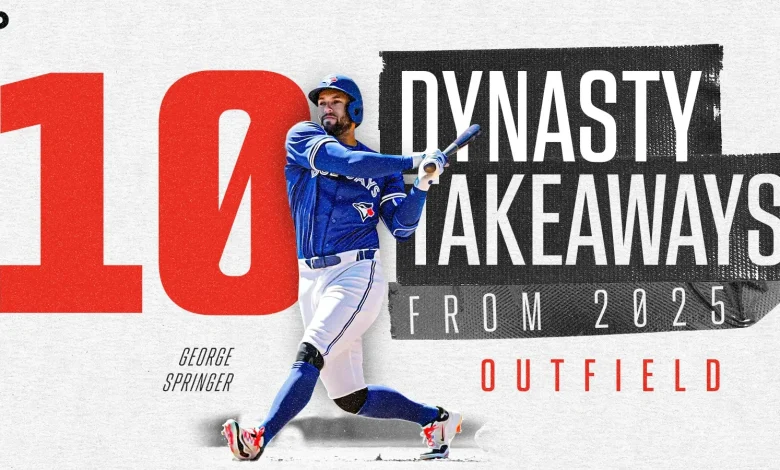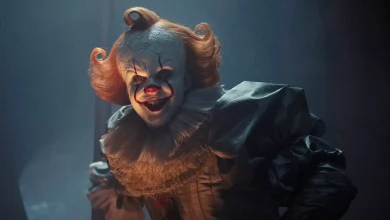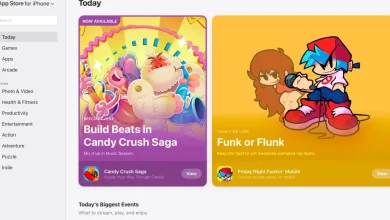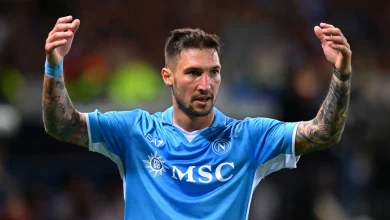10 Dynasty Takeaways from 2025: Outfield

It was quite the season for Fantasy Baseball’s deepest position. Outfielders were all over the news in 2025. Aaron Judge’s battle with Cal Raleigh in hopes of taking home his second consecutive American League MVP award has been a topic of debate for months. For a few of those months, Pete Crow-Armstrong looked like he was going to be a candidate for that award in the other league.
As we pivot towards the offseason, now is the perfect time to assess the state of the position and address some of the main lessons we learned in 2025.
Ten Takeaways From 2025:
1. Name Brand Players Do Name Brand Things
Of the top ten most valuable fantasy outfielders, per Fangraphs’ Auction Calculator, five had ADPs within the top-15 picks. Aaron Judge and Juan Soto finished at #1 and #2, respectively, providing incredible return-on-investment as consensus top-ten picks. The only two outfield-eligible players who finished outside of the top ten with sub-20 ADPs were Kyle Tucker (136 WRC+) and Mookie Betts (3.4 WAR playing SS). The only true “disappointing” campaigns from established outfielders were due to injury, as Yordan Alvarez and Ronald Acuña Jr. missed significant time.
The takeaway? High-level outfielders are high-priced, but they can be worth the investment. Having a player with the potential to generate elite production on a day-to-day basis is a luxury; however, the depth at the outfield position makes it more of a debate than it is at other positions. The drop-off between the “S-Tier” and “B-Tier” of second basemen is much sharper than it is in the outfield. That said, players like Soto and Judge are going to continue justifying their production. If there’s a chance to acquire one of those elite performers from a rebuilding manager, do it. If you’re the rebuilder, think long and hard about opting to let go of a perennial performer.
2. George Springer Isn’t Done Yet
Just under a year ago, I authored a piece entitled “veteran hitters facing the cliff”. While I was right about some names, I was very wrong about two of them. The first one was George Springer, who had regressed since his Astros days and seemed to be reaching the twilight of his career. Instead, he posted his best season since 2019, mashing 32 home runs with a 166 wRC+. Much has been said about the Blue Jays’ emphasis on improving their bat speed, and the 2 mile an hour jump Springer’s made in his swing has paid dividends.
Springer came into the season outside the top-50 outfielders and with an ADP in the 230-240 range. He’ll end the season as a consensus top-20 performer in 2025 as a talisman of a World Series run. The age factor (36 years old) will still be a question mark, and his health will be under the microscope after leaving Game 3 with an upper-body issue. That said, if the bat speed gains are sustainable, Springer could prolong his career into his 40s. His fantasy value will undoubtedly diminish by then, but he’ll be worth keeping around/targeting as a reliable offensive performer next season.
3. Cody Bellinger is Back
In the aforementioned article, I highlighted Bellinger’s “odd man out” status with the Cubs. At the time, there were no rumors regarding Tucker, but I still felt that Bellinger needed a change of scenery to truly thrive. He got one, and he did.
The offseason was eventful for the former National League MVP. After a good but unremarkable 2024 season with the Cubs, Bellinger was basically given to the Yankees via trade. Chicago acquired Cody Poteet in return, who was designated for assignment before Opening Day. The real win for the Cubs was sending the majority of Bellinger’s $26.2 million contract to the Big Apple, with the savings earmarked for a potential (but yet to materialize) extension for Kyle Tucker. Tucker’s 136 wRC+ narrowly beat Bellinger’s 125, but the latter outperformed in home runs (29) and fWAR (4.9).
The performance looks like it’s sustainable, too. Bellinger has made huge strides in his plate approach since leaving the Dodgers. His 18.1% whiff rate is his lowest of his career, and his bat speed is up a full tick since joining the Yankees. His tendency to hit fly balls to his pull side (24.7% AirPull rate) pairs well with the layout of Yankee Stadium, as only five ballparks give him a higher expected home runs. Bellinger has already announced that he’s going to become a free agent this offseason, but it’s hard to pick out a better destination for him than back in the Bronx. Follow his free agency closely. If he sticks in the middle of the Yankees lineup, or lands on a team where he’s the second or third option alongside another slugger, he could repeat his 2025 performance and then some.
4. The Young Guard is Here
Judge and Soto may still be a tier above every other option, but there are plenty of young players getting close to entering the “elite” tier. Ten of the 20 fWAR leaders this season were 25 years old or younger. Corbin Carroll (6.5 WAR) and Julio Rodriguez (5.7) aren’t surprises to see, but Pete Crow-Armstrong (5.4), Wyatt Langford (4.1), and James Wood (3.3) have all established themselves as potential franchise cornerstones within their first few years in the league. Sal Frelick, Andy Pages, and Tyler Soderstrom may not have the same upside, but they’ve proven to be reliable fantasy options. The trio combined for 11 fWAR last season, despite having an ADP between 280-380.
Those guys have been rostered in Dynasty leagues for years, and the chances of acquiring any of them via trade at this point are slim to none. However, the offseason serves as a time to get a jump start on the next wave of acquirable talent. The 2025 Draft didn’t have the “elite” outfield prospects that we’ve seen in previous drafts (e.g., Crews, Langford, Caglianone, Condon, etc.), but there are some intriguing options. Cubs first-rounder Ethan Conrad has picked up some buzz as a potential early-round selection. Devin Taylor, Brendan Summerhill, and Jace LaViolette were all collegiate top-100 selections who could also find themselves in the majors within the next four years.
That list of players doesn’t even take into account the impressive crop of rookies that debuted in 2025. Originally, they were going to be addressed here, but their performance deserves its own section.
5. Beware the Preseason “Hype-Train”
According to NFBC’s ADP, Oneil Cruz was a top-35 draft pick, and Brenton Doyle was in the top-75. In dynasty, these don’t carry as much weight, but it speaks to just how highly these two were spoken about before the season started. On paper, it made sense. Oneil Cruz was (and depending on who you talk to, still is) a physical specimen who could be a dark-horse MVP candidate if he makes enough contact. Doyle was a middle-of-the-order bat with a lot of leeway on a bad Rockies team. Cruz’s counting stats were good (20 HR, 38 SB), but a .200 AVG and 32% strikeout rate limited his value. Doyle was just all-around bad, posting a 65 wRC+ (worst in MLB) and 0.4 WAR (4th worst).
Like many other “disappointments” discussed in this article, they both still have time to become fantasy-relevant. Both are only 27 years of age, and they provide value in real life in ways that don’t always show up in fantasy. Cruz, especially, will still be rostered next season. A 6’7″ slugger with the ability to hit baseballs 120+ miles an hour warrants taking a flyer on. That said, neither lived up to the “breakout” hype they generated before the season started. In retrospect, both had the same warning sign to be wary of, a bad whiff rate, with Doyle not having the power upside to make up for it. Going into 2026, be wary of players with the potential to break out but still have major holes in their game that need to be addressed.
Speaking of… my prediction for who is going to ride the “hype-train” this offseason:
6. It’s Time to Move on From Jordan Walker
Don’t be disillusioned by the videos coming from Driveline or the discourse from optimistic Cardinals fans. We now have a 279-game sample size to evaluate Jordan Walker, and it’s not pretty. In the last two seasons, Walker’s accumulated the worst fWAR among MLB outfielders (-1.9), and is in the bottom four in wOBA (.263) and wRC+ (68) (min. 800 PA). While it was only two years ago, his .787 OPS, 116 wRC+ rookie campaign feels like an eternity ago now. That campaign likely contributed to his 290 ADP (per NFBC), on par with Roman Anthony and ahead of Wilyer Abreu and Ryan O’Hearn. Fantasy managers who selected him were rewarded with just six home runs, ten steals, and a .584 OPS.
Walker’s a physical monster, and has the frame to find form as a slugger. He’s got insane power (78.1 mph bat speed, 99th percentile) and good exit velocities with a 50% hard-hit rate. The problem is putting the bat on the ball (35.6% whiff rate, 34.1% chase rate). It’s not impossible for that skill to develop, but it’s incredibly challenging. Walker’s inability to handle offspeed (.172 wOBA) or breaking stuff (42.1% whiff rate) doesn’t help either. Walker can rebound and grow into an MLB contributor. However, he’s a player to avoid until significant improvements are made in his approach at the plate. Walker is an “avoid-at-all-costs” asset going into 2026, with my faith in him making the necessary changes dwindling.
7. Top-100 Prospect ≠ Top-100 Production
There’s something to be said about “selling high” when it comes to managing prospects. Whether it’s the organization, the player, or a combination of circumstances, the value and perception of a prospect can change in a matter of weeks. Justin Crawford started 2025 as a surefire promotion candidate with good bat-to-ball skills and elite speed. After another great year went unrewarded, it now looks like it will take a trade or injury to see Crawford on a major league field. The same can be said for Chicago’s Owen Caissie and Kevin Alcántara. Both have now spent significant time in AAA and have yet to lock down a role on the Cubs’ roster. That could change depending on Kyle Tucker’s free agency, but the organization’s hesitance speaks volumes about how they perceive each player.
This statement isn’t exactly ground-breaking news, but it remains relevant in dynasty contexts: A player’s rank in the top-100 prospects/top prospects list does not directly translate to fantasy/real-life relevance. Prospects are investments. Some pan out. Some don’t. Value rises and falls due to any number of factors, and it’s a disservice to the player to only evaluate based on one set of rankings. Dylan Crews was a consensus top-10 prospect before the start of the season, and was going in the top-120 picks in redraft leagues (before Arozarena and PCA by NFBC ADP). Now, after an injury-riddled year with a 77 wRC+, he’ll likely come nowhere near that range next season. That’s not to say Crews is a bust, but fantasy managers might be starting to regret not cashing in and trading for a more certified performer.
8. Watch for Late Bloomers
When I started doing the Stash List in 2024, Addison Barger popped up on my radar several times. I ignored him. I fell into the “he’s 24 in AAA with average stats. He can’t be good if Toronto hasn’t called him up yet” trap. That year, they did, and Barger has been proving me wrong ever since. He’s not the only one. Jakob Marsee (133 wRC+), Jo Adell (37 HR), and Zach McKinstry (114 wRC+) were all cast off or ignored for one reason or another. Now, all three will likely be seen as viable fantasy assets in the outfield for 2025.
Just because a player isn’t in the majors or on top prospects lists doesn’t mean they’re not going to be valuable fantasy assets. I’m not saying to give up a top prospect’s roster spot for a high-risk, high-reward player, but it’s important to be diligent when tracking the minor leagues for potential “post-prospect” breakouts. Felix Reyes (24 y/o, PHL) and Philip Glasser (25 y/o, WSN) are just two of many players who could fall into that category with a strong 2026. Kala’i Rosario (22, MI.) and Zach Levenson (23, STL) sit a tier above them and have age on their side, but may be undervalued as of now. There’s no “playbook” for finding these types of players, but I tend to look for strong K/BB rates with solid bat-to-ball skills and exit velocities. If a player has those traits and a track record of solid production, they’re worth keeping a stern eye on.
9. A Tale of Two Rookies
The 2025 crop of rookie outfielders was an impressively deep class. Roman Anthony, Jasson Domínguez, and Cam Smith dominated much of the dynasty discourse before the season started as potential difference makers. Anthony (140 wRC+, 2.7 WAR) has the makings of a superstar and was the clear top performer, while Domínguez and Smith showed decent production, but will need to find another level to thrust themselves into fantasy relevance. Anthony is an example of the success that can come with “prospect-hoarding”. He was lauded as a top prospect and has quickly established himself as a must-start in fantasy, where he will stay for years to come. However, for every Anthony, there’s a Jac Caglianone.
The former Florida Gator was a consensus top-five pick in FYPDs before this season, and managers were hoping that Caglianone would see the field as early as mid-2025. They got their wish, but I bet some will be wishing the Royals had allowed him more time to grow before promoting him. Caglianone finished with the worst WAR of any outfield rookie in 2025 (-1.6), struggling to assert himself in 62 games with the big league club. His performance in the minors (20 HR’s, 186 wRC+) warranted a promotion, but he looked lost once he came up. He’s a testament to the depth of the skill gap present between the minors and MLB right now. Even hitters like Junior Caminero and Pete Crow-Armstrong went through two years of growing pains before breaking out in 2025. Caglianone has plenty of time to grow into a legitimate MLB slugger, but it just won’t be as soon as fantasy owners may have hoped. Prospects like Anthony, who can make an impact immediately, are increasingly rare. Fantasy managers should practice some patience when expecting their top rookies to produce right away.
10. The Grass Isn’t Always Greener
Before the start of the season, Nolan Jones and Christopher Morel were identified as potential “bargain” options after moving to organizations with strong reputations for player development. Jones went from the black hole that is Colorado to the Guardians, which had produced a solid young core of hitting talent in recent years. Morel was entering his first full season with the Rays, with hopes that his new organization could cut down the swing-and-miss and tap into his 20-25 homer power more consistently. Both players finished the season with negative fWARs, and now could start 2026 without a MLB roster spot.
Like in the “preseason hype” segment, it’s important to avoid the recency bias that comes with the offseason news cycle. Just because there are conversations being had about a player once they’re traded doesn’t mean they don’t possess the same issues that kept their value low with their original team. Players who are in the news cycle may have their value artificially inflated because of the coverage they get. Morel and Jones were being drafted in redraft ahead of Anthony, Pages, and Frelick, just to name a few, and their production the following season came nowhere close to warranting that price. I know that isn’t relevant to dynasty, but it gives some context to the level of hype there was around them. There are going to be opportunities to cash in on changes of scenery (see: Bellinger, Gavin Sheets), but make sure the risk is calculated before relying on a risky asset.
Featured Image by: Justin Redler





